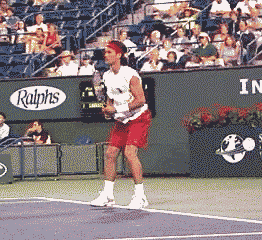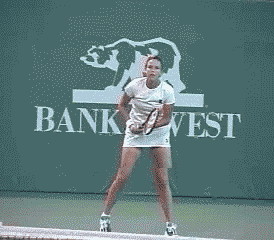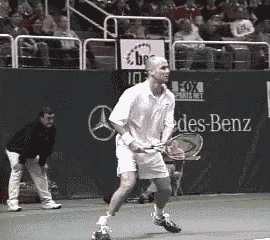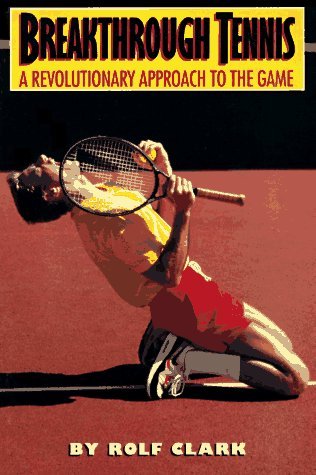|
TennisOne Lessons Stop Learning the Wrong Way Rolf Clark We learn tennis, usually, by listening to what someone tells us to do. Someone who doesn't feel what we feel. At the beginning we are told: "Turn sideways to the net." "Get your racquet back early." "Keep your eye on the ball." "Follow through." And so on.
Eventually we are inundated with these and other tennis rules and tips. We strive to follow all of them. Often they don't help; frequently they are harmful. On our own we watch the pros play and try to imitate them. That doesn't work either. It doesn't get to what's missing in our own games. Watching and listening do not deal with the three components of tennis that are part of every good tennis player's game: balance, timing and concentration. You need to explore your own balance, timing and concentration. They can't be explained or even seen. Why Rules and Tips Don't Work Almost everyone will tell you to "watch the ball" or "look at the ball" or "keep your eye on the ball." That seems to be the cardinal rule of the game. But watching the ball isn't really the answer. I tried watching the ball for years before I realized that trying to "watch the ball" distracted me from doing what I really needed to do, which was to hit the ball. A spectator in the stands can watch the ball. You can watch the ball all you want, but it's not going over the net unless your racquet hits it. Of course, watching it helps you hit it. But hitting it requires more than just looking at it with your eyes. It requires something from your mind and your body. You do need to keep your eyes on the ball, but you need to keep your mind on the ball too. And, you need to feel where your racquet is so you can make it solidly hit through the ball that you're watching.
Take another well-known rule: "Bring the racquet back early." That's supposed to help you have time to hit. But bringing the racquet back early can mess up your timing. It puts a delay in your swing. Learn about good timing and you'll bring your racquet back at the right moment. More accurately, you'll start your swing at the right time, which is different. "Bring the racquet back" is misleading. It inserts a disconnect between your racquet and your body. When you prepare to hit, you should focus on how your racquet will hit the ball, not on bringing the racquet back. Even more fundamentally, we try tennis tips hoping they'll produce a good swing. It's the other way around. Swing correctly and certain results happen. For example, consider the tip "keep a firm wrist." Keeping a firm wrist won't make you swing properly. It's swinging properly that causes your wrist to stay firm. We see that the pro doesn't use his wrist when he swings and mistakenly think the firm wrist is causing his good swing when it's really the other way around -- his good swing causes the wrist to be fixed. Many standard tennis rules and tips may simply be bad advice for your tennis. Turning sideways to the net, for example, can rob you of power and quickness. Most touring pros do not turn sideways to hit. Watch the power and speed of a Layton Hewitt or Andre Agassi. They hit facing the net more than the side of the court. Bringing the racquet too far back can disrupt your timing. Pointing at the ball to hit an overhead can throw you off balance. Trying to hit to the open court will cause you to focus on a result instead of an action -- an action like driving the racquet through the ball.
Cause and effect are often confused in tennis tips. Swinging with proper balance and timing will cause you to follow through completely. But a complete follow-through will not cause good timing or balance. Avoid any tip that takes your attention away from the impact itself. "Bring the racquet back early" and "follow through" both put your mind on the racquet, and not the impact. “Make the racquet hit through the ball” is better, it's impact focused. What you work on is important. Most mechanical steps you try -- those actions that can be described and imitated -- will not make a difference in your game. And what helps one person doesn't necessarily work for someone else. No single answer exists. In the physical game, our balance and timing can make an enormous difference, yet we usually don't work on either. No one tells us to pay attention to balance or timing, so we don't. In the mental game, we are instructed to "concentrate" and told how crucial concentration is to effective tennis. But we're rarely told what concentration is or how to improve it. Exploring concentration and experiencing good concentration will produce payoffs.
Your comments are welcome. Let us know what you think about Rolf Clark's article by emailing us here at TennisOne.
|




